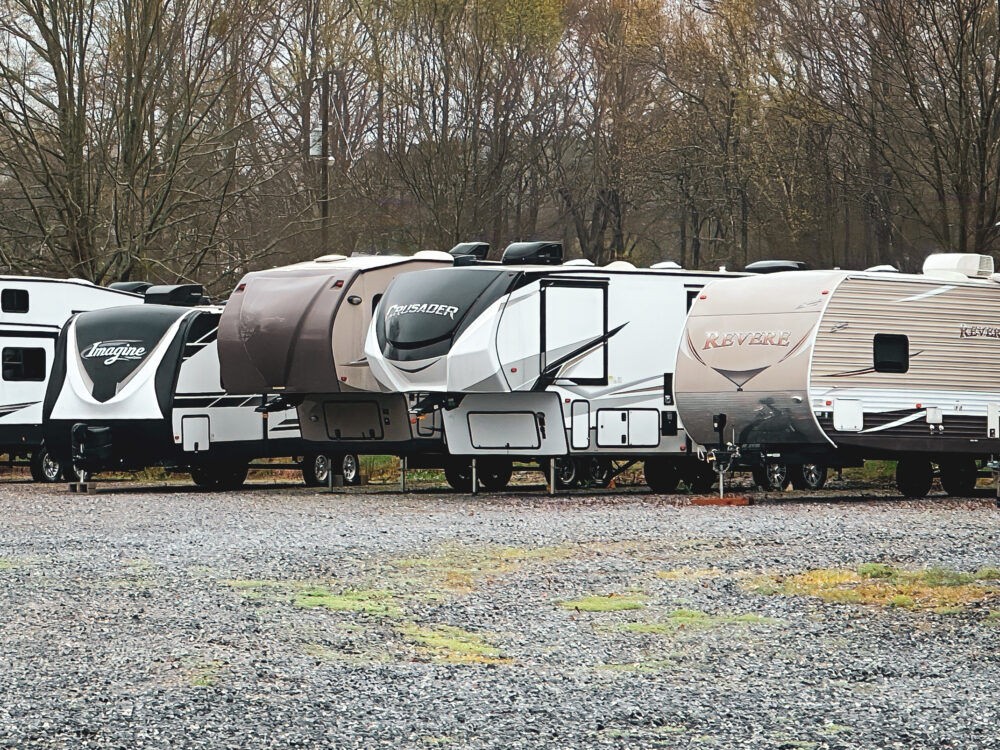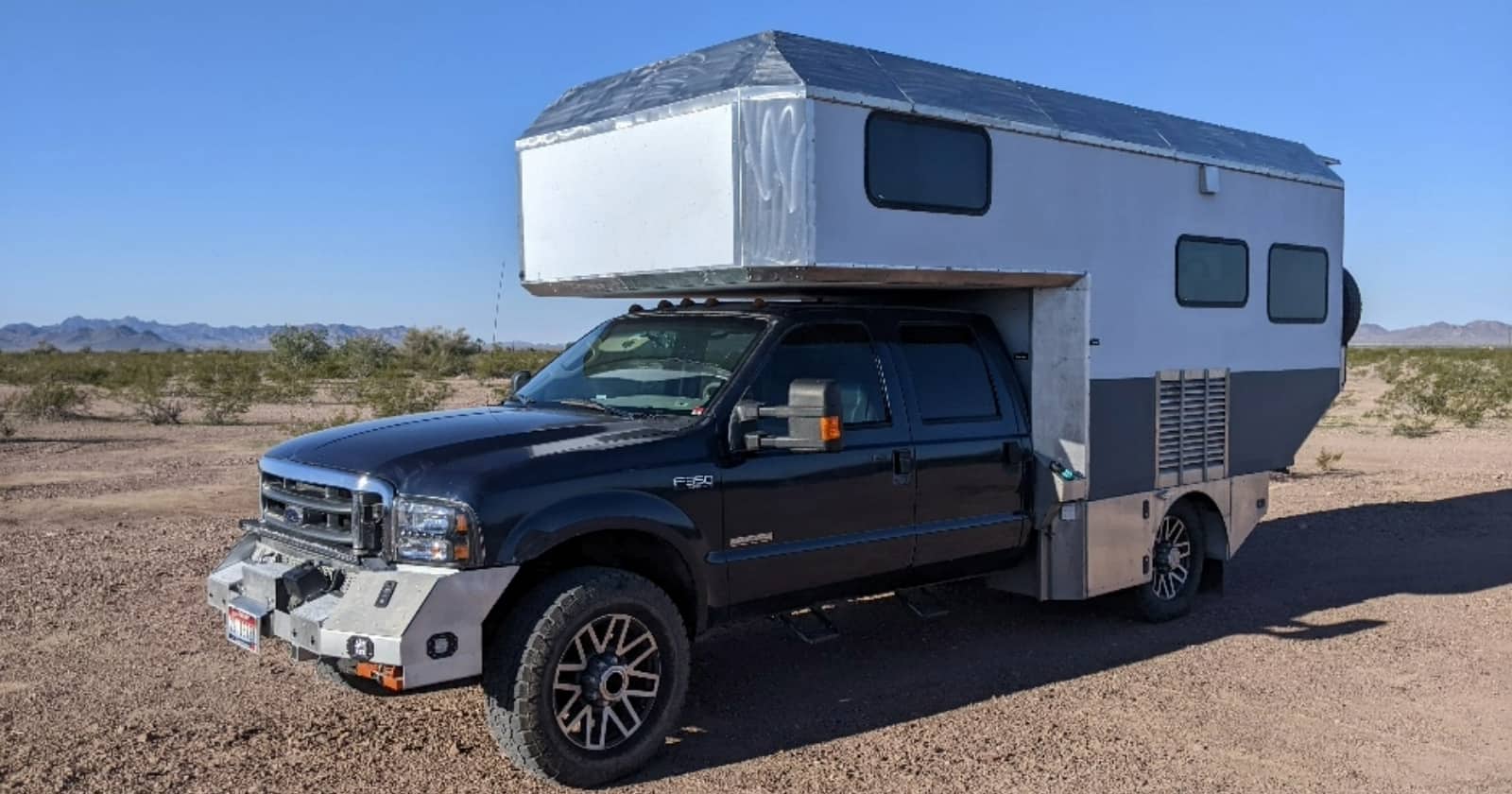
The Average Cost Of Winterizing An RV
For many of us, the summer heat is dying down, so we need to start planning for fall and winter. If you don’t use your RV all year long, this may be the period when you store your vehicle for a few months. Before you park your RV in your backyard or drop it off at a storage facility, you’ll need to properly winterize it. But how much does this cost?
Winterization may cost less than $50 if you stick to a budget, but it can also add up if you factor in the extra cost of cleaning, maintenance, specialty parts/products, and a storage facility. Essentially, it can be as cheap or as expensive as you want! In order to get a proper level of winterization, though, you will usually need to spend at least a bit of money.
With that in mind, let’s break down some of the different parts of winterization and how much they will each cost. Your RV may require more or less care than others, so the price will always vary. But after consulting the content below, you should have a good idea of how much you might spend this coming winter.
Antifreeze: About $15/gallon
First things first, you’ll need antifreeze for your RV! This ensures that your pipes and water tanks don’t burst when freezing temperatures arrive. The classic pink antifreeze will do the job just fine in most cases.
It’s important to use a non-toxic variety because it’ll be sitting in your plumbing for a long time. You don’t want anything that can contaminate the system. Even after you flush all the antifreeze out and replace it with water, a toxic variety could give you some nasty aftereffects.
Fortunately, most types of antifreeze are pretty affordable, so you don’t have to empty your bank account here. Generally, you’ll only need one or two containers to get the job done. The rule of thumb is to measure the length of your RV, then use one gallon of antifreeze for every ten feet. So a 30-foot motorhome requires about three gallons. Some models with massive holding tanks might break this scale a bit, but it’s a good starting point!
Containers range in price from $5-$15 per gallon, so you won’t usually have to spend more than $50 on antifreeze. Best of all, antifreeze doesn’t go bad in a container, so you can always store the leftovers and use them next year to cut down on your winterization costs!
Winterizing kits: About $15-30
If this is your first time preparing an RV for the colder months, you might not have the necessary equipment on hand. In this case, you’ll need to make an initial investment to get the right gear.
Winterizing kits can provide important items like water heater bypasses, dehumidifiers, hand pumps, monitors, and more. These parts are often sold separately as well, so you can determine whether it’s worthwhile to buy an entire kit or just a collection of necessary parts.
The most common kits are for bypassing the water heater. These are quite affordable and most of them cost between $15-$30. It’s also a one-time purchase, so you won’t have to lose this money every year. If you need a budget-friendly option, try this RV Camper Winterizing Kit from Amazon.
Repairs and replacement parts: Varies
This next part isn’t necessary to winterize an RV, but it can still be good to do anyway! Over time, certain pieces in your RV might break or wear out. They might not be in need of immediate repair, but it’s often better to act sooner rather than later. So while you’re cleaning out your RV and preparing it for storage, you might want to take time to replace or repair anything that’s broken.
This step will obviously look different for everyone because each vehicle needs unique care throughout the year. But some things you might need to buy include caulk, roof sealant, air filters, water filters, water heater anode rods, paint, batteries, and more.
We can’t put a specific price on this section because everyone needs different supplies. But it’s reasonable to assume that you could spend $50 or more on repairs and replacements every time you winterize your vehicle.
Cleaning supplies: About $15
Next up, it’s time to clean out the RV so you don’t leave any messes that will get worse over time. This is probably the cheapest part of winterizing because there’s a good chance you’ll already have your cleaning supplies on hand. But you might need to buy stronger products or special supplies for deep cleaning.
Again, this process is hard to put a price on. But there’s a good chance you won’t need to spend much more than $15 for winterizing cleaning products.
DIY winterization vs. hiring a professional
With all of this in mind, you may wonder if it’s worth the hassle to prepare your RV all by yourself. The labor and supplies can add up. This creates a place in the market for professionals to step in and offer their services. If you’d rather give the job to someone else, you can always hire someone who specializes in winterization.
But what’s the better option when it comes to price? Whether you do it yourself or outsource the job, it will still cost you. There’s also a range of prices for both options.
If you opt for the DIY route, you may spend between $50-$100 to winterize your own RV. On the other hand, professional services often cost between $100-$500. The more you pay, the more services you’ll receive. In terms of price, you’re usually better off taking care of this task yourself. But if you want professional help and/or don’t have time to do the job, you can always hire someone else.
You should also look at the benefits of storing your RV in a seasonal facility. Sometimes these places will include winterization services in the overall price. If this is the case, you can just drop it off without worrying about the whole preparation process.
Storage costs: Varies
Speaking of storage, let’s discuss the biggest factor that will affect the price of your winterization. When you prepare your RV for seasonal storage, you need to decide where you will park it during that time. You could go for the cheapest route by parking it in your own yard or garage.
But some people don’t have the space for this kind of long-term storage. In this case, you may want to opt for a storage facility. These come in all shapes and sizes. Some are just large parking lots, while others have covered parking. The most expensive ones are indoors so the owners can control the temperature and humidity levels.
You may be able to park your RV at home for free or pay hundreds of dollars per month for a high-end storage facility. The most expensive options can cost about $450 per month! These prices will play the biggest role in determining how much it costs to winterize an RV. The more you pay, the better protected your RV will be from theft and damage from the elements.
But as long as you take the proper precautions and thoroughly winterize your vehicle, you can safely store it at home too. It’s all up to you! Whatever you need for peace of mind is the right call.
Track your RV maintenance
Make sure you keep track of all your RV maintenance and repairs with an online tool such as RV LIFE Maintenance. Not only can you keep all of your documents in one place, but you’ll also receive timely reminders when maintenance is due to help you avoid costly repairs and potentially serious accidents.




I think to empty the water from the pipelines would also be a great option. Noel
I am curious why none of these articles talks about blowing out and emptying the water lines. While it doesn’t get way below zero here in the PNW, we do get anywhere fro 6” to a foot of snow at our house where I store the trailer. Using a compressor and blowing out all of the lines is simple with just a couple of fittings needed. I would just as soon not have to store antifreeze year round. It’s a good time to clean the water heater, replace the anode rod along with other maintenance.
Cost of RV Antifreeze. I suppose there are some RV Resorts that may charge $15 a gal but in NE Ohio the current price per gal at big box stores is $3 for -50F and $4.50 if you need protection to -75F, but I do not recall ever hearing about it getting that cold in the lower 48 except for people living above 5,000′ elevation or maybe along the Canadian border.
My 24′ Class-C only needs 1-1/4Gal. I drain my hot water tank and by-pass it so I only need to “treat” the lines. After opening all the low-point drain valves, I use air to blow out most of the water then with all valves closed I drop a suction line from the water pump into the jug of antifreeze. Starting with the furthest sink I open each faucet till I get “Pink” coming out. Then move to faucets closer to the water pump. This treats the lines and adds a bit to each sink water trap. I flush the toilet and finally, I add 1/2 cup to the water inlet for “City Fill” and “Tank Fill” to treat those lines. So my cost is about $5.
Menards has RV anti-freeze for less than $5 per gallon. Stock up!
I open all spigots -open low point drain valves & water tank,-& water heater. then use in/out door vacuum cleaner Blow out drains so nothing in “P” traps. then vacuum low point drains. then i know all is ok . been doing this for 30 years never had a problem, I DO NOT use pink anti-freeze. pull fuse to pump so it doesn’t accidently get turned on.. keebler/sparky1
I use less than one gallon of antifreeze just for the P-Traps and just a little overflows into the grey tank, a pint for the black tank. (after clean/flushing black tank)
I flush all H20 lines, pump and hot H20 Heater with 40psi Air.
There No need to fill H20 system with antifreeze, that’s just a waste of money and antifreeze you have to deal with when winter is over.
So to make a long story short.
IT ONLY COST $15.00 TO WINTERIZE MY 22FT TRAILER.
It cost me $15.00 for one gallon of antifreeze for the P-Traps.
I flush all water lines, pump and hot water tank with Air at 40psi.
That’s all of the cost $15.00 for one gallon of antifreeze.